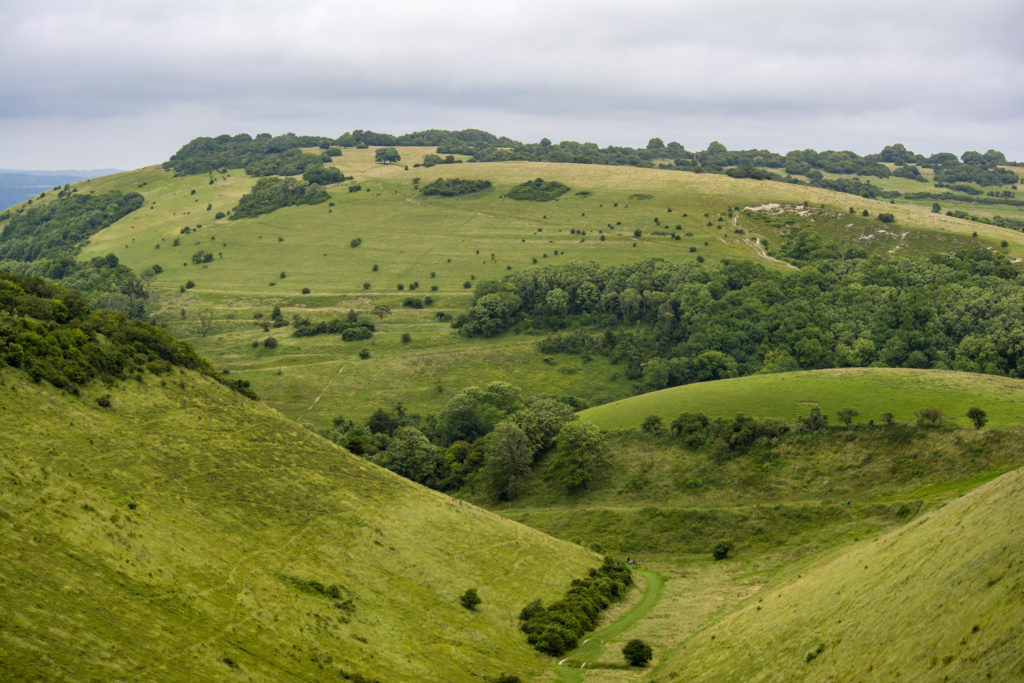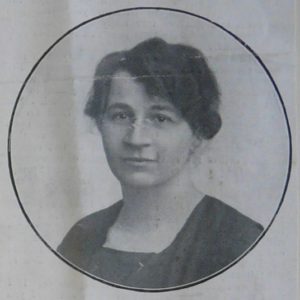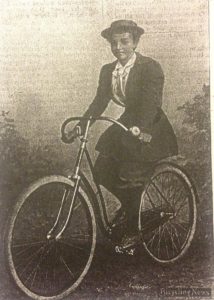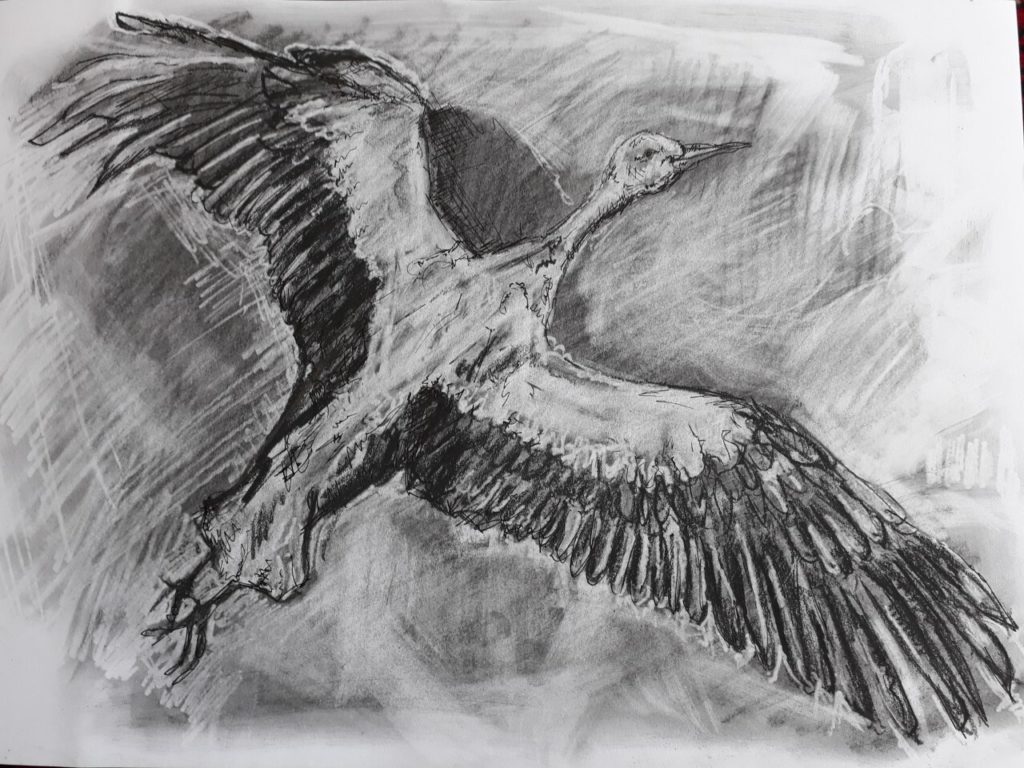
This is a legacy story from an earlier version of our website. It may contain some formatting issues and broken links.
‘Courage calls to courage everywhere, and its voice cannot be denied.’ – Millicent Fawcett

The statue of Millicent Fawcett
The statue of Millicent Garrett Fawcett was unveiled in 2018, the centenary year of the 1918 Representation of the People Act. It is the first to depict a woman in Parliament Square and commemorates one of the most influential feminists of the past 150 years.
The figure faces the Houses of Parliament, the institution Millicent lobbied for decades to grant women the vote. In today’s Pioneering Women of Sussex blog we explore her connections with Brighton with guest blogger, suffrage researcher and author Elizabeth Crawford.
On 4 May 1867 the Sussex Advertiser carried a lengthy description of the wedding of one of Brighton’s MPs, Professor Henry Fawcett, 33, notable for holding academic and political offices despite being totally blind.
On 23 April he had married 19-year old Millicent Garrett. She was the ‘daughter of Newson Garrett, Esq, of Alde House, Aldeburgh and the sister of the gifted lady, Miss Elizabeth Garrett, L.S.A. Elizabeth Garrett was the General Medical Attendant at the St Mary’s dispensary for women and children in London and one of the few ladies who have undergone the study and toil necessary to gain a diploma as medical practitioner’.
The paper was unable to claim any comparable distinction for the bride but did say that she was ‘young, and looked very lovely’.

Millicent and Henry Fawcett 1868 (c) The Women’s Library @LSE
Among the wedding gifts highlighted by the Sussex Advertiser were ‘an exquisitely-beautiful silver ink-stand, formed from the flower of the water lily, the base of which consisted of lily leaves, charmingly arranged’, presented by ‘Mr Willett’ and ‘a handsome silver cruet’ from Mrs Merrifield, of Brighton’. Henry Willett, a founder of Brighton Museum, had supported Henry Fawcett during his 1865 election campaign, while Mrs Mary Merrifield, an artist and dress historian, was also for many years a local champion of women’s rights.
The Fawcetts divided their time between Cambridge, where Henry was professor of political economy and London, where they lived while parliament was sitting. Millicent, as ‘lady patronesss’ of various charitable events, dutifully fulfilled her role as wife of Brighton’s MP. In October 1867 she was present at the banquet that followed the launching of Brighton’s new lifeboat. The next month she helped organise a Royal Pavilion ball in aid of the Sussex County Hospital. At the beginning of the following year, just over two months before the birth of her daughter, Millicent was ‘lady patronesses’ of a fancy dress ball in aid of Brighton charities.
However, at the same time as performing these wifely duties, Millicent was also forging a career for herself as a writer and speaker on all aspects of the rights of women. Her first article on ‘The Education of Women of the Middle and Upper Classes’ was published in April 1868, in the month of her daughter’s birth.

Brighton Town Hall, 1870s
Then, on 17 July 1869, still only 22 years old, she was one of the speakers at the first London public ‘votes for women’ meeting and on 23 March 1870 gave a talk on that subject to the Brighton Liberal Association in Brighton Town Hall. Long afterwards she mentioned in her memoir, What I Remember (1924), that Frederic Merrifield, husband of Mrs Mary Merrifield, ‘was my best friend in Brighton over my project to give a suffrage address there in 1870’, remembering that ‘Mr and Mrs Merrifield were on the platform, and so were their two little girls’.
Not all Brighton Liberals were so supportive, Millicent noting that ‘Several members of his [Henry’s] Election Committee were aghast at the proposal, and thought I would injure his prospects of re-election’. The meeting was chaired by Charles Carpenter, whose son, Edward, Millicent later described as ‘so well known as a writer on socialist and revolutionary lines’.

Image courtesy of Elizabeth Crawford
The Brighton Herald of 26 March 1870 commented on Millicent’s appearance on the public platform that; ‘She is a lady of small stature, and of fragile but very pleasing appearance; perfectly collected in her manner and with a very clear, distinct, emphatic delivery, not at times without a sense of humour’.The Brighton Gazette (31 March 1870) reported her talk, titled ‘The Electoral Disabilities of Women’, in considerable detail. The paper in no way supported Henry Fawcett’s Radical Liberalism and in its April 7 issue described ‘the agitation for female suffrage’ as ‘nothing more than a piece of impracticable theorising’, the editor remarking that Mrs Fawcett would be held responsible for introducing ‘an element of discord into many households’ should women be given the vote. His final words were that ‘The best advice we can give these lady agitators is to let matters alone’.
Unsurprisingly, Millicent Fawcett didn’t heed this advice and continued as a member of the committee of the National Society for Women’s Suffrage which in 1872 opened a branch in Brighton, with Mrs Mary Merrifield as its treasurer. Among its members were Edward Carpenter, his mother and sisters.

Dame Millicent Fawcett (c) The Women’s Library @LSE
With a general election imminent Henry and Millicent Fawcett came down to Brighton at the beginning of February 1874 and were staying in lodgings in Cannon Place when, on 3 February, Millicent suffered the one notable accident of her long and supremely active life. Horses had been brought round to Cannon Place so that the couple could go for a ride on the Ladies’ Mile on the Race Hill. Millicent had mounted and was waiting while a friend helped Henry into his saddle when her horse bolted. It raced down Cannon Place and then slipped on the kerb at the turn of the road, throwing Millicent into the middle of King’s Road. She was unconscious when taken into the chemist shop run by Mr Gibson (this was probably at number 107 King’s Road). Dr Gavin Pocock, of 42 Cannon Place, was called to attend to her. It was 30 minutes before Millicent recovered consciousness and could be carried back to the lodgings. Henry was distraught but Millicent’s sister Elizabeth, who came down from London that evening, was able to reassure him that no bones had been broken. It took Millicent a while to recuperate, time spent in writing a novel, Janet Doncaster (1875).
At the general election, held a few days after the accident, Henry Fawcett lost his Brighton seat but was soon back in the House of Commons as MP for Hackney. He and Millicent returned to Brighton in May, staying at 29 Cannon Place, presumably the lodgings they had used in February. The boarding house was run by a widow, Mrs Margaret Maguire, and the attractive bow-fronted house still stands, one of a short listed terrace.
In What I Remember Millicent Fawcett, referring to her Electoral Disabilities lecture, wrote, ‘It is a pleasure to reflect that the Suffrage seed sown [in Brighton] in 1870 may possibly have had some share in preparing the soil for the return of Lady Astor as the first woman M.P. in 1919’. As you pass Brighton Town Hall, walk down Cannon Place, or visit the Pavilion, remember for a moment young Millicent Fawcett for whom visits to Brighton marked an early step in a long political career. In 1918, as leader of the constitutional suffrage movement, she ensured that for the first time a large number of women were granted the parliamentary vote and in 1928, now a dame of the British Empire, saw all women recognised as citizens on the same terms as men.
Written by Elizabeth Crawford
Article from BRIGHTON HERALD, Saturday 26 March 1870, p3
Local and Provincial News.
Mrs. H. Fawcett on the Electoral Disabilities of Women.
No discussion was allowed on Mrs H. Fawcett’s lecture at the Town Hall on Wednesday evening on the Electoral Disabilities of Women, and, therefore, the Chairman, Mr Carpenter, very properly allowed no resolution to be passed by the meeting. But the fair Lecturer would, nevertheless, we doubt not, think it a very poor compliment to her or to her sex if the arguments she put forth in favour of female suffrage did not call forth criticism. They were sufficiently plausible, if not convincing, to justify this; and we make no excuse for pointing out a few flaws in the arguments of the advocate for female rights.
In the first place, Mrs H. Fawcett overlooked one of the very first principles of political science, that rights carry with them duties, and that they who cannot discharge those duties are not in a position to claim the corresponding rights. Are women prepared, if they receive equal public rights with men, to discharge equal public duties? Will they consent to be drawn for the militia? To serve upon juries? To be called out as special constables? Or to fulfil the functions of such offices as Lord (or Lady) Lieutenant of the County and Sheriff, and, as an essential accompaniment of this latter office, of hangman – we beg pardon, of hang-woman? These, and other offices, national and municipal, carry with them the rougher duties attached to political rights; and, to use a common expression, women must take the rough with the smooth.
It is true that there is one great public office – the highest of all in the kingdom – which is filled, and well filled, by a woman. But it must be borne in mind that the character of the Royal Office in England, under our Constitutional form of Government, is such that nothing inconsistent with the female character is expected from it. But how is it on the Continent? How is it even in the American Republic? Why do not the citizens of the United States, in which men are so free and women so aspiring and so exacting, concede as much as we English have conceded, and choose a female President, or, at all events, allow females to nominate and vote for a female President!
Here is a hiatus in Mrs. H. Fawcett’s list of objections which, we think, should be filled up. There are, doubtless, others; but we pass on to one or two of the lecturer’s answers to the objections she did set forth. And, first, as to her belief that domestic harmony will be promoted by women possessing votes: the reason for such belief being that, as in religion so in politics, only men and women holding similar opinions will woo and wed. We say nothing as to the feasibility of the conjecture. But is such an effect as this one to be desired? Is it desirable that we should go back to the social state of the Italian Republics, when families were separated from families by an almost impassable barrier, – a political barrier, – and Guelf and Ghibelline, Montague and Capulet, hated and made war on each other in the same city as though alien and hostile blood had flowed for ages in their veins? We have already class divisions and jealousies enough in England; do we want to increase them tenfold by stereotyping political differences, – now fortunately counting for every little in English society, – as a barrier between every couple who otherwise might be free to meet and love – woo and wed? It might, perhaps, conduce to family agreement to create such barriers. Ut how about national peace and brotherhood?
Mrs H. Fawcett expressed her astonishment and regret that men for whom she had the greatest respect should look with some alarm to the consequences of the possession of votes by women. We confess to be amongst these, and we should esteem the politician very lightly who, in order to carry out some abstract principle, shut his eyes to the results likely to flow from its adoption. Universal Suffrage, – that is, the possession of the suffrage by every man 21 years of age, of sane mind and not convicted of crime, – stands on grounds quite as strong as female suffrage. But what politician who did not desire the destruction of the present order of things would think of conceding universal suffrage to the men of England in their present uneducated and dependent position? And why, then, are we to dismiss all fears as to the exercise of the electoral suffrage by women? We do not know if all women are Conservatives or all democrats. But we think, with their impulsive nature and their ignorance, as a body, of public life and political principles, nothing is more likely than that they should be the first to-day and the latter to-morrow! Heroines and victims they might be in both causes, as they were during the first French Revolution; but sober-thinking, cool, patient, practical politicians, – such as do the chief work of public life in this country, well, women must change their nature very much ere they approximate to this type, and until they do, we would rather did not possess votes. They might not, indeed, kill themselves, or go mad, with excitement; but we very much fear they would cause a good many of their husbands, fathers, friends, and lovers to do both!
We are quite prepared to admit that a great work of justice has to be done for woman – that she now suffers from many legal disabilities which ought to be removed or modified. But may she not safely leave this work to be done by men? The very fact of her appealing to man to grant her equal political rights is an admission that she may look with equal confidence to his placing her in a fair legal position. But Mrs Fawcett will doubtless reply that women, like men, have a right to work out their own rights; that, like the working-men, they may claim to have a voice in the making of laws on their own behalf. We deny the analogy of the cases. Women cannot work out their so-called rights. Even if they received the franchise to-morrow, it would be a boon which might be withdrawn the next day without fear of consequences. In certain circumstances, as of internal commotions or of foreign aggression, most certainly the concession would be withdrawn or would disappear like “The baseless fabric of a vision.” Can this be said of a real substantial right, such as the franchise is to working men? What is the best evidence of the title of any class to a right? Is it not the ability of that class to maintain itself in the possession of that right as well as to extort it? And woman not possessing that ability – Nature having denied to her those qualities, physical, or intellectual, or both, on which that ability rests, though it is possible to imagine that the franchise might, under certain social conditions, be conceded to her as a favour, it could never take the shape and substance of a right. Man would always have the power of cancelling the favour, and would most certainly decide whether he should cancel it or not according to the results of the experiment. No right could be treated in this way. A right ignores all consequences. For our part, we would rather not at present grant the favour or try the experiments!














































